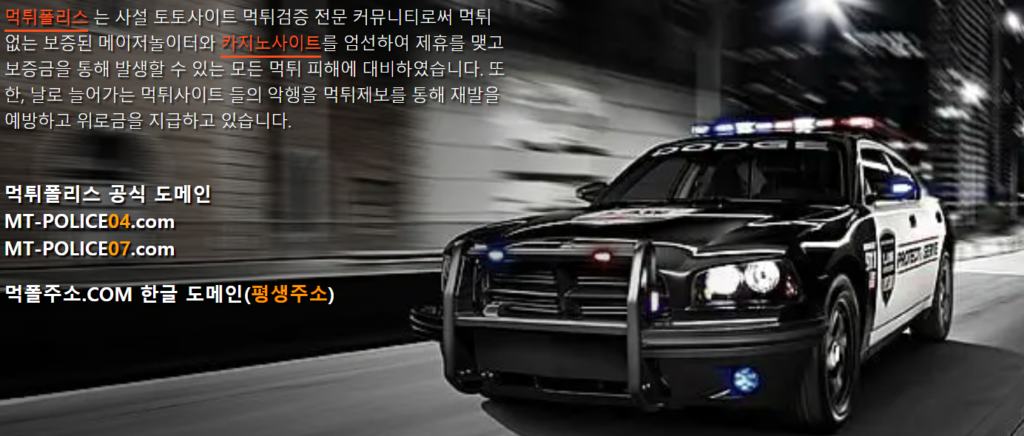Phoenix outdoor events operate under constraints that most event managers in cooler climates never face. When it’s over 110 degrees for four consecutive months a year, heat itself becomes the key design consideration—not just an add-on fact of dispatch. That’s why Phoenix event staffing requires specialized planning to ensure both staff endurance and guest comfort.
Crews break down; medical incidents rise, and guest experience plummets in moments when staffing is planned without considering desert-specific realities. Well-trained hospitality staff in Phoenix understand these challenges and are prepared to perform efficiently even under extreme heat conditions.
This playbook covers the operational moves that keep guests safe, maintain staff endurance, and deliver seamless experiences when conditions are unforgiving.
The Heat Index Ladder: How Phoenix Staffing Needs Scale
Heat index isn’t temperature alone. Risk is also compounded by factors such as humidity, radiant intensity, crowd density and physical exertion. The dry heat of Phoenix presents a deceptive danger: Visitors can underestimate their risk because they are less obviously uncomfortable than they would be in more humid climes. And workers exposed directly to the sun soak up 50% more radiant energy as shaded workers.
The National Weather Service heat index framework maps risk tiers:
- 95–104°F: Baseline precautions. Standard hydration, lightweight uniforms, brief rotations (20–30 min sun exposure).
- 105–114°F: High risk. Crew rotations tighten to 15–20 minutes in full sun. Shade becomes mandatory infrastructure, not optional.
- 115°F+: Extreme risk. No staff remain in direct sun longer than 10 minutes without active recovery. Off-duty crew must recover in climate-controlled spaces.
For Phoenix summer events, assume 115°F+ is standard. Build staffing and scheduling around that baseline.
Scheduling by Heat Bands: The Core Operational Framework
Traditional shift structures collapse in extreme heat. A host who works 4 hours straight in 120°F sun is physiologically compromised after 90 minutes. Standard event staffing assumes continuous performance; extreme-heat events require fractional shifts and staggered recovery.
The Heat Band Model:
Divide your event into three overlapping zones—each staffed by distinct crews on rotating assignments:
- Zone A (Full Sun, Active Engagement): Greeters, registration staff, beverage servers, crowd management. Max 15-minute assignment. Crew then rotates to recovery for 30 minutes.
- Zone B (Partial Shade, Moderate Task Density): Registration support, roaming attendants, merchandise, logistics runners. Max 30-minute assignment. Lighter physical demand allows longer tenures.
- Zone C (Full Climate Control or Deep Shade, Coordination/Support): Registration hub backup, medic oversight, crew dispatch, hydration station management. Continuous assignment. These roles anchor crew rotation timing.
Practical Application:
For a 4-hour event with 20 guests and medium group of crew (12 total):
- Send 6 man Zone A for three rotations at 20 minutes per rotation.Everybody 20 minutes on, all of you 40 off.
- Dispatch 4 crews to the B Zone with a rotation every 30 minutes (work 30/rest 30).
- Deploy 2 crew to Zone C, seated, managing logistics and hydration supply.
This structure allows continuous service while no single crew member exceeds safe heat exposure thresholds.
Shade and Hydration Infrastructure: Built-in, Not Improvised
Shade isn’t an amenity—it’s an operational necessity. Mobile pop-up shade structures must cover crew recovery zones completely, positioned to allow unobstructed view toward active guest zones (so Zone C crew can monitor rotations).
Hydration Logistics:
- Provide hydration stations in place at every staffing area entrance. The staff has to drink 8 oz of water for every 15 minute round.
- “Drink lots of electrolyte-containing beverages,” which contain sodium, replacing lost minerals and “may work when dehydration would blunt the thirst response.
- ” Even something as simple as having some ice on hand during the team’s rest period between intervals is enough to make a significant difference in core-temperature-reduction levels for you: Simply put ice packs over your pulse points (wrists/neck) do NOT sit in the shade.
- Assign one crew member per 10-person staff solely to hydration station management and pulse-point ice application during recovery rotations. This is not discretionary.
Role-Specific Heat Adaptations
Different staffing roles carry different heat loads. Adapt assignments accordingly.
- Greeters and Registration Staff: Physical demand is moderate but sun exposure is high (standing, minimal shade). These are Zone A job descriptions. Restrict to active stints of 15 minutes. Lightweight, moisture-wicking uniforms (in light colors and synthetic materials) are required—not dress codes optional.
- Beverage Servers: High Movement for high job demands under load (trays, coolers). Zone A assignments, 10–12 minute rotations only. Pre-stage hydration for beverage crews within arm’s reach of their recovery zone—they’re often too focused on service to self-advocate.
- Crowd Management: High vigilance conditions, medium level of physical demand, sun exposure range from partial to full. Alternate between peripheral posts exposed to the sun (Zone A, 15 min) and internal monitoring in the shade (Zone B, 30 min). Radios blasted by 20% above the normal level—heat is a bitch on hearing.
- Systematic pre-positioning: of hydration stations at every staffing zone entrance.One circuit- workers need to take 8 oz of water every quarter-hour. Sip an unspecified amount of electrolyte-containing fluids (They contain sodium, which may help replete lost minerals and perhaps overcome a lack of thirst in dehydration). Have ice stored during rest intervals of the team for every few minute core-temperature reductions (use on your pulse points, Wrists/neck) instead of just sitting in some shade.
Pre-Event (2 weeks prior):
- Confirm venue has water access (fountains, restroom facilities). Identify backup water supply (water truck rental, $150–300).
- Scout shade locations: natural tree canopy, existing structures, or areas where mobile shade can deploy without blocking sight lines.
- Hold a general heat rotation, hydration and symptoms talk for all staff (specific signs – dizziness, stop of sweat production/confusion). Five days before event: Schedule heat-response drill for a 30-minute period.
Event Day Layout:
- Deploy two 20×10 pop-up structures: one for crew recovery (north side, maximum shade trajectory), one for guest comfort (south side, adjacent to main stage).
- Position hydration stations at three points: crew recovery zone, guest comfort zone, and stage-side (for greeters rotating through).
- Set visible timer (20-minute intervals) so crews and Zone C coordinator know rotation cycles without constant radio chatter.
Staffing Assignments (15 crew total):
- Zone A (Full sun, 15-min rotations): 6 crew across three simultaneous rotations (2 stage-side greeters, 2 beverage rovers, 2 crowd management posts). Total active: 2 crew, 4 in recovery/off-duty.
- Zone B (Partial shade, 30-min rotations): 4 crew (information booth, roaming support). Active: 2, rotating.
- Zone C (Climate control, continuous): 2 crew (hydration management + radio dispatch). Plus 1 site coordinator (same as Zone C, management oversight).
- Off-duty buffer: 1 crew (backup for illness/emergency).
Execution Timeline:
- 9:00 AM: Crew arrives, completes hydration baseline (1 liter water minimum), receives final briefing.
- 9:30 AM: Event begins. Zone A and Zone B crews activate. Zone C monitoring begins.
- 10:00 AM (first rotation): Radio signal, Zone A crews shift to recovery. Fresh Zone A crew activates.
- 10:20 AM: Zone A rotates again. Hydration checkpoints triggered.
- 12:00 PM: Event end.All hands to climate-controlled interior space for 15-minute cool-down and hydration check.
| Checklist for Event Execution:All crew briefed on heat band schedule and maximum rotation timesHydration stations stocked with 1 liter per crew member per hour, plus 50% surge capacityIce supply confirmed (minimum 10 lbs per event hour)Electrolyte beverages available (not just water)Recovery shade structures deployed and tested for complete coverageTimers set and visible to Zone C coordinatorRadios tested with volume at +20% normal settingFirst aid station w/ ice, cooling towels and IV access kit (if medical present) Crew trained to recognize heat illness symptoms (early intervention prevents progression)Weather monitored for real-time adjustments; threshold: if heat index exceeds 120°F, all Zone A rotations reduce to 10 minutes. |
Compliance and Risk Management
Rules from OSHA require employers to protect workers from heat illness. Outdoor events aren’t typical workplaces, but your staffing agreement with the crew implies some duty of care.Documentation protects both parties:
- Provide written heat rotation schedules to all crew 48 hours before the event. This demonstrates intent and knowledge.
- Keep a log of hydration distribution and rotation times. Medical providers can reference this if any crew member experiences heat-related incidents.
- Brief crew on voluntary illness reporting: encourage them to flag dizziness, cessation of sweating, or confusion immediately rather than push through. You’re managing liability and protecting people.
- Post heat-response resources visibly: nearest medical facility, hydration station locations, rest area instructions.
Heat illness liability exists in Phoenix outdoor events. Proactive documentation and visible safety infrastructure reduce both human suffering and legal exposure.
Why This Matters: Beyond Compliance
Guest experience in extreme heat breaks down in minutes. Overheated, dehydrated or tired staffers are less responsive, slower on their feet and visibly suffering to the people they’re there for. It cascades: staff see the struggle; guests become anxious about their own safety; engagement drops.”
Conversely, well-rotated, properly hydrated staff maintain energy, attentiveness, and warmth throughout extreme conditions. Guests feel cared for, even during physically demanding events.
The heat band model isn’t a luxury. It’s the operational backbone that makes guest experience possible in Phoenix summer conditions.
Operational Excellence Under the Sun: The Power of Heat Band Staffing
For event planners in Phoenix and surrounding Southwest markets, heat band staffing is no longer optional. Whether you’re managing a 50-person corporate gathering or a 500-person festival, the structure scales: define your zones, assign rotation times based on sun exposure and task demand, pre-position recovery infrastructure, and execute with visible timing discipline.
Crews trained in this model become more reliable. Guests experience better service. Events run safer.
If you’re scaling events across Phoenix event staffing options, staffing partners familiar with heat protocols and zone-based rotation will be your force multiplier. Similarly, specialized hospitality staff in Phoenix are trained on these exact protocols—they anticipate rotation cycles, self-manage hydration, and maintain performance under conditions that would compromise untrained crews.
Extreme heat isn’t a constraint to minimize. It’s a design variable to architect around. Master it, and your Phoenix events become benchmarks for safety and experience.






